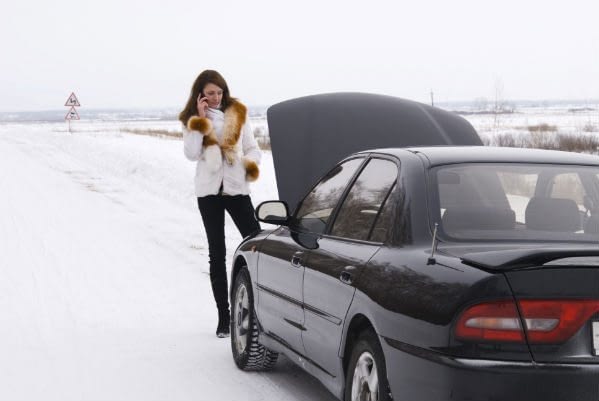
Winter weather conditions can be very dangerous, but you can protect yourself and your family with a glove box survival kit. We have some tips about what to keep in your glove box and in your trunk in case of an emergency. Driving on flooded, icy, or snowy roads can lead to a sudden accident, and it’s important to be prepared for the unexpected.
Your Emergency Kit for Winter Driving: Staying Safe on Icy and Snowy Roads
Your emergency kit should include snow gloves, a multi-function tool with a knife and other tools, several Mylar space blankets, a flashlight with fresh batteries, a plastic poncho, and emergency food items such as protein bars. In your trunk, you can prepare by carrying survival gear to get you out of a tough spot, especially a small shovel, a bag of sand for traction, warm blankets, and bottles of water.
Before winter weather sets in, get your vehicles in for a full service. Checking all of your vehicle’s systems can save you from a breakdown in the cold winter months. Ensure you have snow tires with adequate tread, as well as chains is wise for deep snow conditions.
A full review of your current auto insurance policy is important if you are planning a winter road trip. You may be able to get a policy with higher levels of coverage, a lower deductible, and better protection for if your vehicle ever gets involved in an accident with another driver. You might be an expert winter driver (very familiar with operating your vehicle on wet, icy, or snowy roads, etc.), but other drivers pose a real risk by traveling too fast for road conditions. A driver who spins out in an adjacent lane can be impossible to avoid. If they don’t have car insurance, your uninsured/underinsured driver coverage can protect you, but it’s advised that you carry more coverage than the minimum requirements (25% of drivers have no coverage). It’s also important to have a policy that offers you roadside assistance, and we can research the policy that will best protect you and your family.
Keep your gas tank full and fill it when it’s half empty, particularly when on a winter road trip. Should you be stuck in a snow bank or get involved in a collision, the gas in your vehicle will allow you to stay warm. Always ensure your exhaust pipe is completely free from snow if your vehicle is on. Warm up the interior of your vehicle for about 10 minutes and then turn it off rather than keeping it running. This will help you to conserve fuel while you are waiting for help. It can take some time for emergency vehicles to arrive, particularly in rural areas, on highways, and when there are dangerous road conditions. During this time, staying warm will be the priority. Stay in your vehicle. Don’t attempt to walk and find assistance, as visibility is poor in a snowstorm. It’s easy to get disoriented, and there are dangers and risks in walking along a highway. Your roadside assistance plan can be a lifesaver if your car, truck, SUV, or van get stuck, goes off the road, is involved in an accident, or breaks down and needs a tow.
Our local team is available to speak with you and to review your current car insurance. We have access to the best deals for our friends and neighbors. We always work to find the right amount of coverage at the best price for our clients.
Filed Under: Personal Insurance | Tagged With: Auto Insurance, Car Insurance